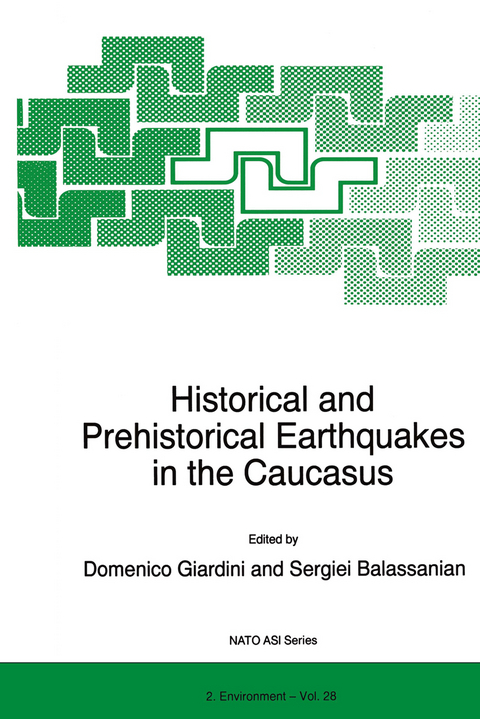
Historical and Prehistorical Earthquakes in the Caucasus
Springer (Verlag)
978-94-010-6298-5 (ISBN)
Earthquakes are the expression of the continuing evolution of the Earth planet and of the deformation of its crust and occur worldwide; while the largest events (M>7. 5) concentrate on plate boundary areas and active plate interiors, moderate earthquakes may take place, if rarely, in all continental areas and may turn catastrophic in areas with poor building construction practice, as tragically shown by the sequence of earthquakes striking the Caucasus region in recent years (Spitak, Armenia, 1988; Rutbar, W. Iran, 1990; Ratcha, Georgia, 1991; Erzincan, E. Turkey, 1992). Vulnerability to disaster is increasing as urbanisation and development occupy more areas that are prone to the effects of significant earthquakes. In order to minimize the loss of life, property damage and social and economic disruption caused by earthquakes, it is essential that reliable estimates of seismic hazard be available to national decision makers and engineers for land use planning and improved building design and construction. While short- and mid-term earthquake prediction may one day be able to reduce significantly the death toll of earthquakes, the environmental effects (collapse of buildings and infrastructures, disruption of the productive chain, human resettlement) can be reduced only through a long-term prevention policy in earthquake-prone areas based on the assessment of seismic hazard and risk, the implementation of safe building construction codes, the increased public awareness on natural disasters, a strategy of land-use planning taking into account the seismic hazard and the occurrence of other natural disasters.
Seismogenesis and destructive earthquakes in the Caucasus.- Seismotectonics of the Mediterranean Region and the Caucasus.- Convergence between Eurasia and Arabia in Estern Turkey and the Caucasus.- GPS constraints on fault slip rates in the Arabia-Africa-Eurasia plate collision zone: implications for earthquake recurrence times.- Recent upper crust geodynamics of central Asia.- Seismotectonics of the Caucasus.- Seismotectonic deformation in the Caucasus.- Modern approaches in paleoseismology.- World map of active fauts, their seismic and environmental effects.- Active faults and strong earthquakes of the Armenian upland.- An investigation of some historical earthquakes and paleoseismic sources in Iran.- Catalogue of large historical earthquakes of the Caucasus.- Seismic Sources of the Trancaucasian Historical Earthquakes.- The catalogue of strong earthquakes in the territory of Armenia and adjacent Regions.- Historical Seismology Research in the Caucasus: methodological aspects and some resuls.- Building up a parametric earthquake catalogue in Europe: the historical bachground.- Strong historical earthquakes in the Armenian upland: new data and elaboration of a technique.- Analysing and improving supporting data set of the Akhalkalak, December 31, 1899, earthquake.- Recent great earthquakes of the Caucasus Region.- A regional instrumental earthquake catalogue for the Caucasus.- Seismic patterns in Armenian upland.- Results of stress field investigation in the territory of Armenia and adjacent regions.- Model of seismicity for the Caucasus test area.- On the identification and Seismological parameterization of earthquake source zones.- Earthquake Activity and Hazard Mitigation in Iran.- Seismological Research for the protection of urban areas: the Kobe lessons.
| Reihe/Serie | NATO Science Partnership Sub-Series: 2 ; 28 |
|---|---|
| Zusatzinfo | XIV, 545 p. |
| Verlagsort | Dordrecht |
| Sprache | englisch |
| Maße | 160 x 240 mm |
| Themenwelt | Naturwissenschaften ► Geowissenschaften ► Geologie |
| Naturwissenschaften ► Geowissenschaften ► Geophysik | |
| Naturwissenschaften ► Geowissenschaften ► Hydrologie / Ozeanografie | |
| ISBN-10 | 94-010-6298-6 / 9401062986 |
| ISBN-13 | 978-94-010-6298-5 / 9789401062985 |
| Zustand | Neuware |
| Haben Sie eine Frage zum Produkt? |
aus dem Bereich


